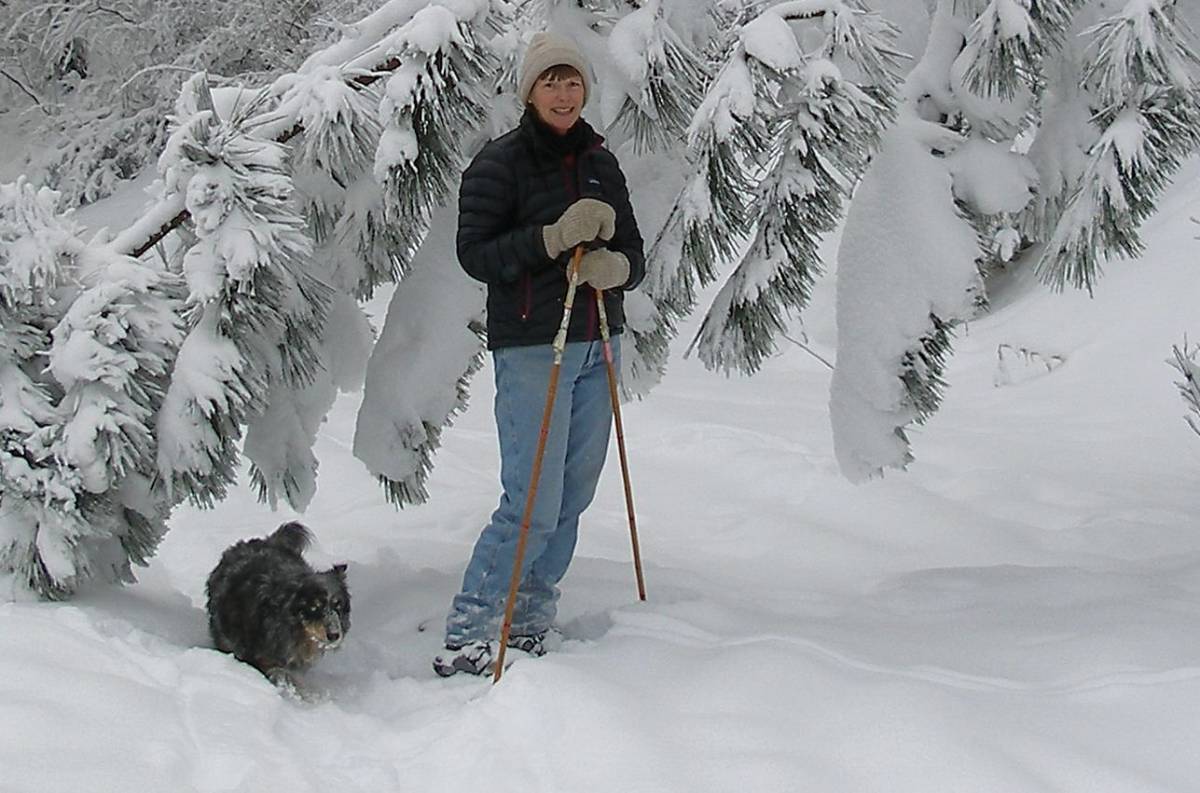Love to walk? Enjoy the beauty of cold, snowy days? Then don’t let winter change your walking habits: simply strap your feet into snowshoes to enjoy this special season and get a great workout in at the same time. Snowshoeing is perfect for those of us in the higher age brackets, who don’t relish the falls that can go with skiing. Plus, its inexpensive and easy to start. The beauty of snowshoeing is you can do it anywhere there is snow: you don’t need complicated equipment, and it allows you appreciate a gorgeous winter day.
Getting Started: Choosing the Right Equipment
Start by figuring out the kind of walking or hiking terrain you already enjoy because snowshoes are designed to meet the demands of different topography. If you think you will stay on flat terrain, say golf courses or closed roads, then choose a less aggressive snowshoe built for that. If you like winter hiking on rolling terrain with occasional steep or icy sections, choose a snowshoe with more aggressive traction. Few of us need gear built for steep, backcountry extended travel, but snowshoes exist for that as well. Once you know what terrain you’ll be on most, visit a well-stocked sports store or one of the on-line giants like REI and L.L.Bean, both of which offer an array of snowshoes to meet anyone’s needs. Talk to a knowledgeable sales person either on the phone if you are going to order on line or at the store. If you order on line, take your time, and ask about various models. Be sure to read the on-line reviews. You want a snowshoe that is easy to put on and is built to last. At the store, try on several pairs, and find adjustable poles as well. Poles help keep you steady in deep snow in particular and really help getting you back up if you fall. Trying to find solid ground to push against in 3 feet of snow, to get back standing is not easy: that’s where poles come in handy! Flip poles over, and grab them just above the basket on the bottom. Your poles should be adjusted to be the right height when your arms are bent at a 90-degree angle.
Staying Warm and Dry: The Right Clothes Matter
Once you have your gear, consider what you will wear. Insulated, waterproof boots are essential as are boot-high wool socks and knee-high waterproof gaiters, to keep deep snow out of your boots. While snowshoes help you walk through snow, you will sink some, especially in powder, so keeping your feet and lower pant legs dry is important for comfort and safety. Some folks wear waterproof rain pants instead of gaiters. I always wear synthetic or wool long underwear tops and bottoms when I snowshoe and prefer a top that has a zipper, so I can regulate my temperature easily. Because snowshoeing is aerobic, I most often wear a lightweight base layer to avoid over-heating. While you can snowshoe in jeans, you will be much happier in synthetic outerwear coupled with a waterproof, wind-resistant, breathable jacket or shell. Don’t forget a warm hat, gloves or mittens, and sunglasses to protect your eyes and, of course, sunscreen for your face.
The How-To of Snowshoeing: Relax and Walk
Once you are at your destination, have your snowshoes on and grab your poles, start walking with a slightly wider-than -normal stance: if you don’t, you’ll end up stepping on the frames and doing a face plant in the snow! Push on the pole opposite from the foot moving forward to give yourself better balance. If you are on a trail used by cross-country skiers, they have the right of way. In fact, try to stay out of any groomed tracks, and make your own to the side. Going uphill requires a different kind of step. In powder, kick your foot forward to create a step: this lets the claws on the bottom of the snowshoe dig in and grip. On icy slopes, you’ll end up using your poles more and won’t be able to easily kick into the snow to create a step. This is when the claws really get a workout—as do your legs. Many snowshoes have a heel-lift device that can be flipped up, to put your foot in a better position for climbing long uphills. If the slope is super slippery, then plan on moving diagonally across it, or look for another way up. For traversing slope, called side-hilling, push the uphill snowshoe into the snow to make a shelf, putting more weight on that uphill shoe. If it is a long traverse, shorten your uphill pole, and extend the lower one, so their tops match in height.
Going downhill gives your quadriceps a dandy workout! Keep your poles in front of you, and take moderate steps with your weight balanced over your feet. Try to keep your body straight, without an exaggerated forward or backward stance. If you are coming down a steep slope, then plan on moving your center of balance and weight to the rear of your snowshoes. If you lose your balance, simply sit down. Never be afraid to sidehill if the downhill looks more than you want to try.
Safety First: Be Prepared
It’s winter, and cold weather can kill you, so be prepared. Snowshoe with another person, and let someone else know where you are going. Carry a backpack with essential survival gear, including a first aid. Keep an extra base layer top in case you get sweaty, and pack a headlamp, water and food. Make sure you have a topographic map and a compass or GPS if you plan to go off trail or into the backcountry.
But don’t let all of these precautions intimidate you or keep you from strapping on those snowshoes. My adventures are almost exclusively on closed Forest Service roads: they are easy to follow, and most are moderate in elevation gain. After all, I’m really just out for a nice winter walk!










